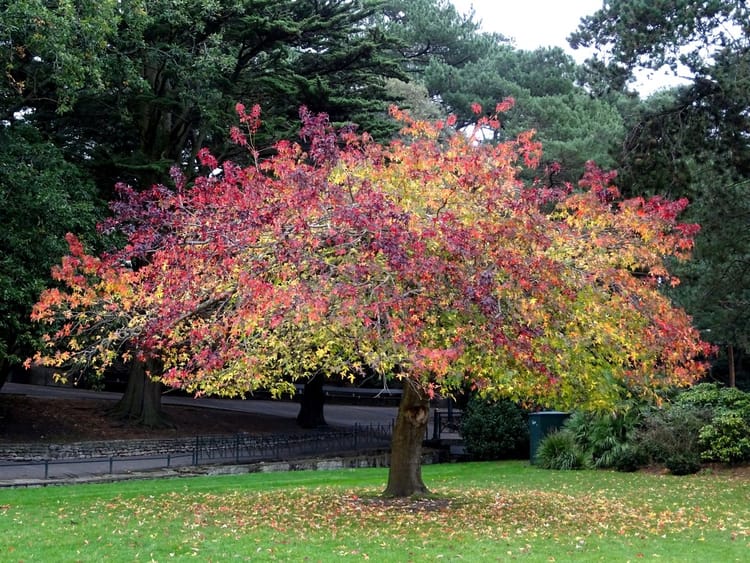The Beauty and Resilience of Cactus Gardens: A Prickly Paradise

Cactus gardens, with their striking shapes, remarkable adaptability, and fascinating diversity of species, have gained popularity among many home gardeners. In this blog post, we'll explore the world of cactus gardens, from their history and cultivation to the reasons they've become so beloved.
A Prickly History
Cacti, often associated with arid landscapes and desert scenery, have a rich history of human use going back many centuries. The roots of our interaction with cacti can be traced back to the Americas, where they were used by indigenous communities for various purposes, including food, medicine, and building materials. As European explorers ventured into the New World, cacti made their way across the oceans and into European gardens.
One of the most iconic cactus species, the saguaro (Carnegiea gigantea), is native to the Sonoran Desert in North America and can live for over a century. The saguaro cactus has become a symbol of the American Southwest, representing the resilience of life in harsh desert conditions. Today, cactus gardens pay homage to this rich history, showcasing the incredible diversity of cacti and their ability to thrive in a variety of environments.

Cultivating Cacti
Cultivating cacti is both an art and a science. Unlike traditional gardens, cactus gardens require a unique approach to care and maintenance due to the specific needs of these succulent plants. Here are some key factors to consider when growing cacti:
- Light: Most cacti thrive in bright, direct sunlight. They have evolved to withstand the intense desert sun, so they require plenty of light to grow and bloom. When cultivating cacti indoors, place them near a south-facing window to ensure they receive adequate sunlight.
- Soil: Cacti prefer well-draining soil. Specialized cactus potting mixtures are available, or you can create your own by adding sand or perlite to standard potting soil. Good drainage is crucial to prevent root rot.
- Watering: Cacti are adapted to arid conditions and store water in their fleshy stems. They are remarkably drought-tolerant and should be watered sparingly. Overwatering is a common mistake that can lead to rot. Allow the soil to dry out completely between waterings, and water deeply when you do.
- Temperature and Humidity: Cacti generally prefer warm temperatures and low humidity. They can tolerate cooler conditions but should be protected from frost. In regions with high humidity, proper air circulation is essential to prevent fungal issues.
- Container Gardening: Cacti are well-suited for container gardening. Choose containers with good drainage, and ensure they are not too large for the size of the cactus. Re-potting becomes necessary as the cactus grows. For gardeners in colder climates, planting cacti in pots can allow you to bring them inside when the temperatures are too cold for them outside.

The Aesthetic Appeal of Cactus Gardens
Cactus gardens are known for their unique aesthetic appeal. These gardens often feature a wide variety of cacti species, each with its own distinct shape, size, and color. Some cacti, like the barrel cactus, display a spherical form with symmetrical ribs, while others, such as the organ pipe cactus, grow tall and slender with branching arms.
The architectural beauty of cacti makes them ideal focal points in gardens. Their sculptural quality adds a touch of drama to the landscape, and when strategically placed among other desert plants and rocks, they create a striking contrast. Cactus gardens are not limited to arid regions; they can be cultivated in a variety of climates and settings, including xeriscapes, rock gardens, and even as potted specimens on balconies and patios.

Benefits of Cactus Gardens
Beyond their visual appeal, cactus gardens offer a range of benefits, both to the environment and to gardeners themselves.
- Low Maintenance: Cacti are low-maintenance plants that require minimal care. They are perfect for busy individuals or those who are new to gardening.
- Drought Tolerance: As water resources become scarcer, the drought-tolerant nature of cacti is increasingly valuable. Cacti can thrive with very little water, making them a sustainable choice for landscaping.
- Biodiversity: Cactus gardens can be havens for wildlife, attracting pollinators such as bees and butterflies. Birds and small mammals may also visit in search of shelter or food.
- Educational Value: Cactus gardens provide opportunities for education and research, allowing people to learn about desert ecosystems, plant adaptations, and the importance of conserving water.
- Therapeutic Benefits: Gardening, in general, has been shown to have therapeutic effects on mental well-being. Tending to a cactus garden can be a calming and meditative experience.

Notable Cactus Species
Cactus gardens are not limited to a single type of cactus; they can include a wide variety of species, each with its own unique characteristics. Some notable cactus species that often find a place in these gardens include:
- Prickly Pear (Opuntia spp.): Known for their flat, paddle-like stems and vibrant flowers, prickly pears are a popular choice for cactus gardens. These can be quite cold hardy, making them suitable for planting in colder climates. Eastern prickly pear cactus (Opuntia humifusa) is particularly hardy, and is able to survive temperatures down to 30F (-1C).
- Barrel Cactus (Echinocactus spp.): Barrel cacti are famous for their round, ribbed shape and can grow quite large over time.
- Golden Barrel Cactus (Echinocactus grusonii): A standout species known for its striking golden spines and globe-shaped form.
- Saguaro Cactus (Carnegiea gigantea): The iconic symbol of the American Southwest, saguaros can grow to enormous heights and live for centuries.
- Aloe (Aloe spp.): While not a true cactus, aloes are often included in cactus gardens for their similar appearance and ease of care.

Maintaining a Cactus Garden
Caring for a cactus garden involves more than just planting and forgetting. Regular maintenance is key to keeping your garden healthy and thriving:
- Pruning: Cacti may require occasional pruning to remove dead or damaged branches, promote airflow, and maintain their desired shape.
- Pest Control: Keep an eye out for common pests like mealybugs and scale insects, and address any infestations promptly.
- Fertilization: Cacti generally do not require frequent fertilization. Use a balanced, low-nitrogen fertilizer sparingly during the growing season.
- Protection from Cold: In regions with cold winters, provide protection for your cacti to prevent frost damage. This may involve covering them or moving them indoors during the coldest months.
- Repotting: As cacti grow, they may outgrow their containers. Repot them when necessary, usually every few years, to ensure they have enough space for their roots.






Comments ()